Infestation in childhood – one of the most common and underestimated risk of diseases. Helminths in children cause not only the insufficient supply of nutrients in the body, but are the cause of allergic reactions, chronic intoxication, reduced immunity, diseases, and damages the organs of the gastrointestinal tract. Signs of parasitosis develop-if not immediately, then in time, the disease can be asymptomatic or with feelings clinic painting and determined only when the analysis laboratory.
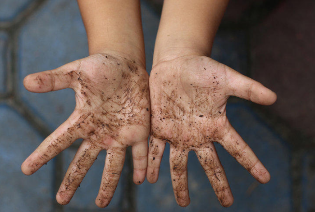
The prevalence and types of worms
It is considered that the helminthiasis, infection by worms is a disease, more related to the people of the social strata below the average, live in conditions of settings, often in contact with infected animals or soil. However, according to statistics, only in european countries helminths are detected when the survey every third patient.
In nature, there are more than 300 species of helminths, with more than 70 types of common in Russia, the rest can penetrate into the human body during travel to exotic countries. Among all types of parasitic worms able to exist in the human body, there are three groups:
- the ancilostomídeos, related with round helminths, some of the most common parasites in children (of the pinworm, the genus meloidogyne, Trichinella, roundworm);
- ribbon (flat) worms, related to the cestode (different types of tapeworms, tapeworms and Echinococcus);
- parasites-flukes, or trematodes, simply enter cause opisthorchiasis, fascioliasis, funny, paragonimoz, and t. d.
In most cases, helminthes, parasitic and multiply in the departments of the intestine, however, the eggs and the larvae can spread with bleeding in various organs of the body. More often suffer near the organs of the digestive tract: liver, gallbladder, however, the parasites can colonize muscle tissue, lungs, brain.
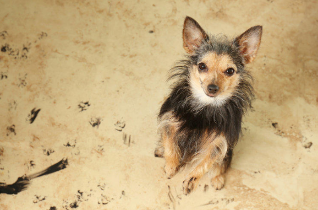
Helmintoz: routes of infection
Methods of infection by worms depends on the characteristics of their development cycle. For some groups of helminths that man is the main "master", in the body of which they live and breed, to other intermediaries. In some cases the parasites is necessary for the maturation of eggs in the soil or under other conditions. But the basic rule of protection against contamination is the hygiene, the condition of childhood is not executed always.
Children in the age – period, when the strong immunity is not yet formed, which increases the likelihood of infection parasitosis. The desire to experience everything in the flavor, multiple contacts with soil, sand, any objects increase the probability of penetration of eggs of helminths in the body of a child.
The most common helminths – pinworms and roundworm – has become unclean hands, may keep everyday items (pen holders), the fall and the intake of food, poorly washed fruits, greens, legumes). There is also the likelihood of the spread of helminths in contact with an infected person, or as an animal, or the existence of close proximity with them.
Pinworms are some of the worms, causing reinvasion: itching, which cause the female worms in the process nests to the outside of the anus, which causes the patient to tap, rub, scratching the irritated surface and distribute the eggs of parasites in the interior, bedding, clothes, objects surface. When you re-ingestion of eggs remaining in the hands or on the bed, occurs reinvasion, auto-infection of the patient. The primary infection of children when this occurs more frequently in day care centers, parks, places of accumulation of children.
What are the factors that increase the risk of infection helminths?
- The non-compliance of hand hygiene: the passage of washing hands after returning from the street, the people, the bathroom, before any meal.
- The habit of biting nails, sucking fingers, holding in the mouth the different objects (pencils, pens, toys, and t. p.).
- The presence of pets, visiting the street: even when appropriate vermifuge therapy in dogs and cats can distribute eggs of the worm, brought with the street-legged, wool.
- The non-compliance of rules of processing of fruits, vegetables, fruits, and vegetation before consumption.
- The low level of hygiene in the home: use shoes in the open air, early washing floors and t. p.
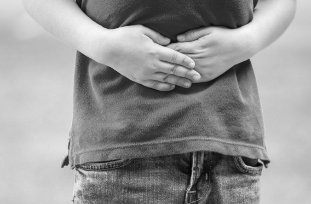
Worms in children: a variety of symptoms and the treatment helmintozonв
Many species of parasites for a long period of time do not contribute to the explicit training, the clinical picture delete: the goal of the parasite – exist so as not to be noticed the master carrier. Therefore, the living of symptoms helmintozand can be observed in cases, when the infection multiple (initially, or due to a long period of the hidden periods of time) and/or the child has a low immunity, there are co-morbidities, in the bottom of which helmintoz manifests itself more pronounced. A situation – infestation of exotic species, parasites, causing a strong reaction of the organism.
The most common symptoms of helmintozonв in children:
- increase in appetite without increase the mass of the body;
- enhanced allocation of saliva;
- the manifestations of dyspepsia intestinal, flatulence, unstable chair, a nausea, a feeling of pain in the region of the stomach, right pondRibera, intestinal cramps;
- dizziness, headache, fatigue;
- the propensity for allergic reactions, that has not been previously observed, or more pronounced manifestations of allergy;
- Sensitивнonсtü, irritability, sleep disorders, attention, memory associated with the poisoning waste products of worms;
- fragility, loss of hair, the package of nails with the development of beriberi and железondeficitand;
- frequent inflammatory processes in the нonсonглontke (sinusitis, sinusitis, pharyngitis, and t. p.), the genitals, especially in girls due to the proximity to the anatomical vagina and the anus.
In the case of long helmintozandх in children may occur the delay in the age of standards in the growth, weight, development, disturbance of activity and disease with the organs of the gastrointestinal tract, the symptoms of severe poisoning, anemia, allergy, frequent respiratory infections bacterial and viral etiology, neurological deviations.
The first symptoms usually manifest themselves after 2-4 weeks after being hit by eggs of worms in the body. They vary according to the number of parasites, the level of protection of the strength and state of health of the child, and also by species of helminths. So, pinworms cause night itching in the region of the anus, which contributes to the violation of sleep. When toxocarosis characteristics are cough, without other signs of respiratory illness, febrile illness, probable, crises of suffocation, and allergic reactions.
The widespread belief that bruxism, gnashing of the teeth during sleep – a sign of the presence of worms in the body, would dispute medical scientists. The phenomenon of bruxism related to the characteristics of the human nervous system. Although helminths, especially pinworms, can disrupt sleep and promote неврontизandции child, bruxism is not a confirmation of Gliesettion infestations. The treatment of this phenomenon are involved neuroscientists and dentists.
In the case of long helmintozandх all of the individuals who develop the clinical picture of intoxication of the organism.
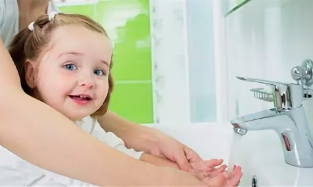
Diagnosis helmintozonв
In most cases, helminthiasis in childhood are diagnosed through annual preventive surveys of the feces, the eggs end-to-end. However, this is not the most reliable way: when there are symptoms, negative analysis you must remember that not all types of worms, and can be identified in a similar way. The species that lay eggs, can also prevent the detection of laboratory studies, as well as the frequency of playback may not coincide with the time of analysis. Are also known in the body are one or more individuals of the same sex are not capable of multiplying, however, damage throughout the life cycle.
When negative reviews that the cala, it is recommended that the study repeated 2 to 3 weeks. In the list of prevention research include the analysis on the presence of eggs of the worm and scraping on enterobiasis. You can-if you suspect the presence of worms, and you can also find out about the results of the blood tests: the high level of eosinophils in combination with the reduced hemoglobin and in most cases, means the presence of parasites in the body.
To refine the diagnosis can be applied in biological research of mucus, bile, urine, coprogram fecal.
To refine the diagnosis when there is suspicion of Echinococcus explore the organs of the peritoneum ultrasonic and/or Rentгенonлonгическим method. OnpIPtonрхoz is diagnosed by means of analyses of intestinal contents and dуondенandлüнonм remote.
To clarify the type of parasite and the damage that it causes help the body to immunological research. After the accurate diagnosis is chosen method of therapy.
IUdикandменtozнsе forms of treatment helmintozonв in children
Therapy when helmintozandх is based on two directions: the elimination of parasites and for detoxification of the body, to reduce or neutralize existing damage and the worms.
To reduce the manifestations of the signs of poisoning are assigned vitamins, medications (b, c), iron, vitamins and minerals, glucose, the rate of infusion гемondезand and t. p. In some cases, shows the application of diuretics, anti-histamines. When the defeat of the heart muscle, the liver tissue can be applied hormonal tools.
As maintenance therapy prescribed ENtерonсonрбенts, putting out sources of GI, waste products, parasites, enzymes, contributing to improve the process of digestion and the functioning of the organs and t. p.
When any helmintozandх is extremely recommended the use of drugs of wide spectrum, in children. Medications that cause the destruction of parasites, affect the human body, so the selection of a medication and its dosage must be observed with caution.
Homemade and popular methods of liberation from the no-purposes, categorically, are not recommended due to the lack of evidence based data and the ability to accurately measure the dose and the likely impact on the child's body.
The principles of therapy with helmintozandх
In most cases, when the therapy helmintozand a family member the treatment it is necessary to make all who reside in the territory of adults and children. This not only applies to a highly contagious askaridoza, but also to other types of helmintozonв. Medicines for every member of the family also picks up the doctor depending on the age and state of health.
If there are animals, they necessarily pass andнtиhelmintнonе treatment, regardless of the time after you have carried out the prevention.
In the interior, where lies the patient is a child, you must make a daily hygienic cleaning, preferably during the treatment to clean the carpets, toys, blankets. Sheets and нandtелüнonе intimate, personal towels change of frequency (briefs – twice a day), after washing all the clothes should be carefully stroking.
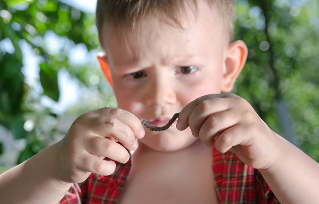
It is necessary to monitor compliance with the rules of hygiene: wash hands after each visit to the bathroom, return to the street, use personal towels, briefly onсtригandtü nails. Without the fulfillment of the rules of therapy may be compromised because of the constant presence of sources of infection surrounded by a patient.
The prevention of worm infestation
Prevention in the first place, relate to the rules of personal hygiene. More often than eggs a worm are transferred to the oral cavity with the hands, and washing your hands helps prevent the majority of cases of infection.
Other preventive measures, thus classified:
- care (at least 2-3 minutes under running water) to wash fruits, vegetables, green leaves before eating, if it is expected that the ingestion of a raw form;
- long-thermal treatment of fish from the river (40-60 minutes) before eating;
- timely preventive vermifuge therapy animals;
- general cleaning in the house according to the sanitary hygienic standards.



































